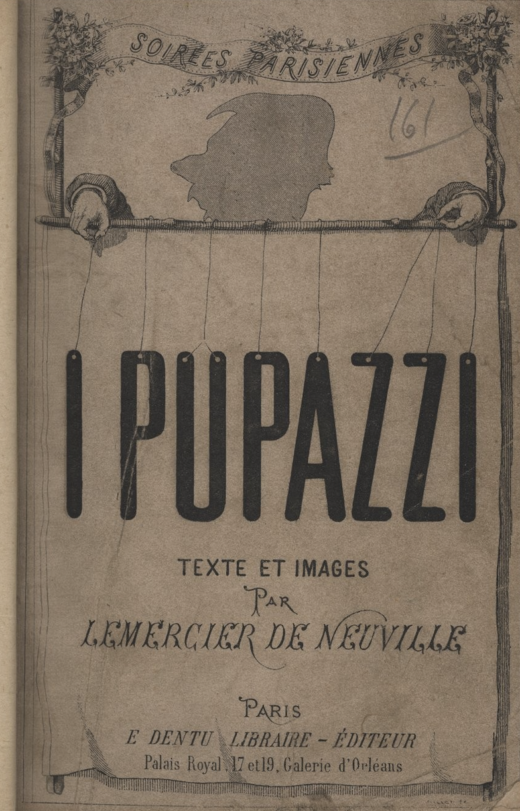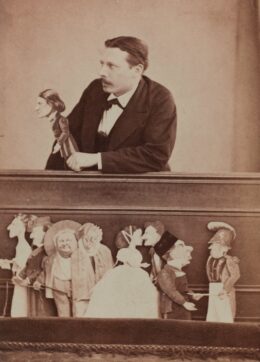
Printed
24 pages
Author(s)
Le Vrai Bonhomme
The play Le Vrai Bonhomme (The Real Man) is part of the volume I Pupazzi published in 1866 and which is mainly composed of monologues (satirical and comical) in verses, each devoted to a different personality. The author notes that it is a book made of contemplations, portraits of personalities and accounts of recent events, in which he proves his talent as an impersonator. The articulated silhouettes of the Pupazzi were faithful portraits of celebrities from the time; he gently mocked their appearance or intellectual character.
Lemercier de Neuville directed his hand-puppet booth alone, as an author, painter, set designer and stagehand. The Pupazzi first met with success during the evening of December 28, 1862 in the workshop of the photographer Étienne Carjat. The name Pupazzi was created that evening by accident, and is not related to Italian puppet theatre. The first performances used articulated silhouettes. A year after the performance of the Pupazzi on May 10, 1864, the painter Gustave Doré suggested for Lemercier de Neuville to start using glove-puppets and to add dialogues to his texts.The plot of Le Vrai Bonhomme is centered around the creation of a performance: every member of the team wants to impose their ideas, regardless of what the author wants.
The label “historical drama in five acts” is humorous.
A dramatic author loses his royalties
Nigot (Simpleton), M. Pigetout (literally, Mr Understands-Everything) and M. Machin (Mr Thing) are having lunch together and waiting for M. X…, the author who is supposed to bring the manuscript. However, when M. X… arrives, he is forbidden to enter. Later, M. Forfrais [play on words between “forfait” (flat rate) and “frais” (cost/fee)] , the treasurer, and M. Machin, director of the theatre, have a meeting during which they count the money they made from the performances. M. Machin needs a great sum of money to stage the performance with the leading actor M. Chose (Mr Stuff). Shortly after, M. Chose arrives and asks M. Forfrais for ten thousand francs; the latter tells him that the performance he was hired for has been cancelled and offers to buy his royalties. Then, M. X… visits M. Forfrais and asks for an advance on his royalties. M. Forfrais also suggests for him to drop his share of royalties and tickets for a hundred francs. The young author signs the agreement. M. Chose wishes to modify the play so that his character is constantly on stage; M. Pigetout decides to write to M. X… and asks him to rewrite the play. The play is very successful, but when M. Chose mentions the producers of the performance, he omits the author, who was not even able to see the performance.
Publications and translations
Lemercier de Neuville, I Pupazzi. Paris, E. Dentu, Libraire - éditeur, 1866.
Lemercier de Neuville Louis, I Pupazzi : texte et image, Hachette Bnf, 2012.
